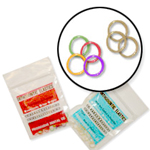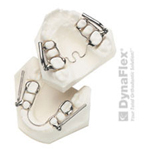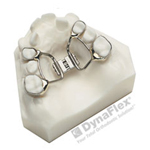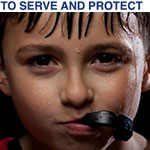Types of Appliances

Elastics
Elastics are removable rubber bands that attach the upper and lower braces or Invisalign® aligners together. They are used to close spaces, accelerate tooth movement, and to idealize the fit of your teeth. Orthodontic patients will be responsible for wearing them as prescribed.
Space Maintainer
A space maintainer holds space for adult teeth that are going to erupt later. They are simple orthodontic appliances that can be used in the upper or lower jaws and are used most commonly in cases where baby teeth have fallen out early and there is a possibility that nearby teeth will drift into the space. Space maintainers do not create any pressure and are well tolerated by our patients.
Habit Appliance
Habit appliances are generally used on the upper jaw and aid in the correction and elimination of tongue thrusting and stubborn thumb/finger sucking habits. They will usually remain cemented in for at least 6 months, or longer if the habit is persistent.

Herbst® Appliance
This is a non-removable appliance used to correct a jaw disharmony where the lower jaw is not keeping up with the upper jaw. When a child has an excessive overbite that is caused by a jaw growth problem, braces alone will not correct this problem. The Herbst appliance is used in conjunction with braces to correct these problems. It helps improve the function of the jaws and is used as a replacement appliance for headgear. Unlike headgear which is removable, the Herbst is cemented in so parents don’t have to keep track of the number of hours their child is wearing it. It is attached to the upper and lower permanent molars and uses metal tubes to hold the lower jaw forward in its ideal position. It then allows the teeth to move and the soft tissue to relax into its new, more appropriate position. The Herbst is usually worn for 12 months and we routinely use this appliance to create dramatic transformations in bites and smiles.

Expander
The palatal expander is one of the most commonly used appliances in young children. The palatal expander “expands” (or widens) your upper jaw when it is too narrow for the lower jaw. Gentle pressure is introduced to the molars each time the key is turned and the jaw is slowly widened. After the desired widening is achieved, the expander remains in place for several months to solidify the new bite. Expanders are used to correct crossbites (upper teeth biting inside the lower teeth) and to create additional space in crowding cases to help avoid the extraction of permanent teeth. The expander is used most conservatively on a growing child so treating your child at the appropriate time is important! Expanders can also be used in adults, but this requires more complicated treatment.
Crossbow Appliance
This appliance is a non-removable appliance used to correct a bite problem where the upper front teeth are biting too far ahead of the lower front teeth and wearing elastics alone will not give us the correction that is needed. The XBow is used as a replacement appliance for headgear and uses nickel-titanium Forsus springs to relieve the patient of the burden of compliance It offers consistent gentle pressure thereby accomplishing the desired tooth movement in a dramatically quick fashion. The XBow is usually worn for 6 months.
Temporary Anchorage Devices (TADs)
TADs are titanium mini-screws that provide unparalleled support for orthodontic tooth movements. They are placed in the bone of the jaws by Dr. Wilk in the Wilk & Wilk clinic. The procedure is quick and comfortable. The placement and location of the screws are customized for each patient and they are removed easily after use. We commonly use TADs at Wilk & Wilk to provide a non-surgical treatment option to patients who would otherwise require surgical correction for their bite/jaw problem.

Mouth Guards
Custom-made mouth guards act as a buffer to reduce the likelihood of damage to the teeth, the braces, and other appliances from blows and physical contact that occur during sports. They also reduce the likelihood of soft tissue damage by acting as a barrier between the orthodontic appliances and the cheeks, lips, and tongue. Most importantly, mouth guards will prevent the lower jaw from jamming into the upper thereby preventing serious injuries like concussions, jaw fractures, and neck injuries.
Our patients wearing appliances, braces or Invisalign® can still participate in sports, but we recommend that they wear mouth guards. We feel that mouth guards are important for athletes of all ages and that they should be an essential piece of athletic gear just like helmets, shoulder pads and knee pads. Sports-related injuries to the mouth and jaw occur commonly so whenever there’s a chance of contact with other players or hard surfaces, we recommend wearing a mouth guard.
Ask Dr. Wilk if you need help finding the right mouth guard to protect your teeth during athletic activities. In the case of a sports emergency, be sure to check your mouth and appliance immediately for damage. If you notice any loose teeth or appliance damage, please contact our office right away. You can temporarily relieve the discomfort by applying wax or rinsing your mouth with warm saltwater.

 Website Powered by Sesame 24-7™
Website Powered by Sesame 24-7™